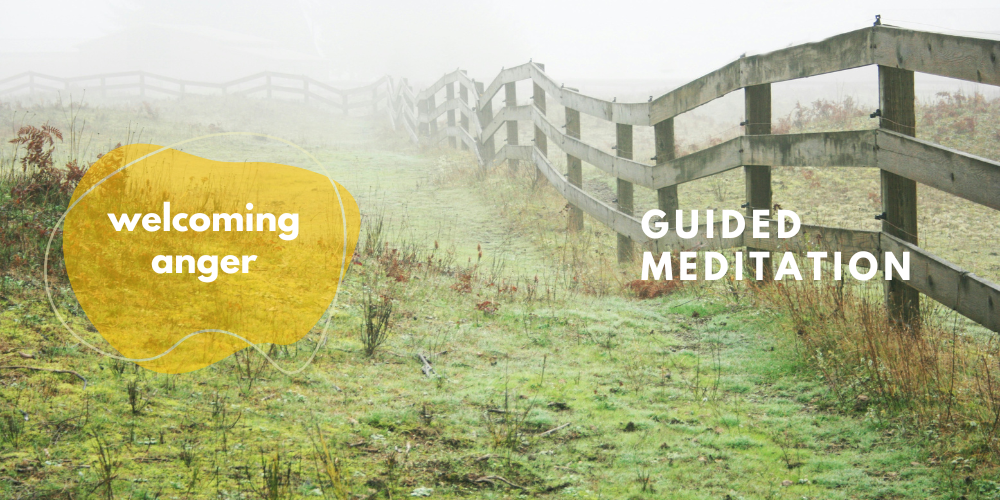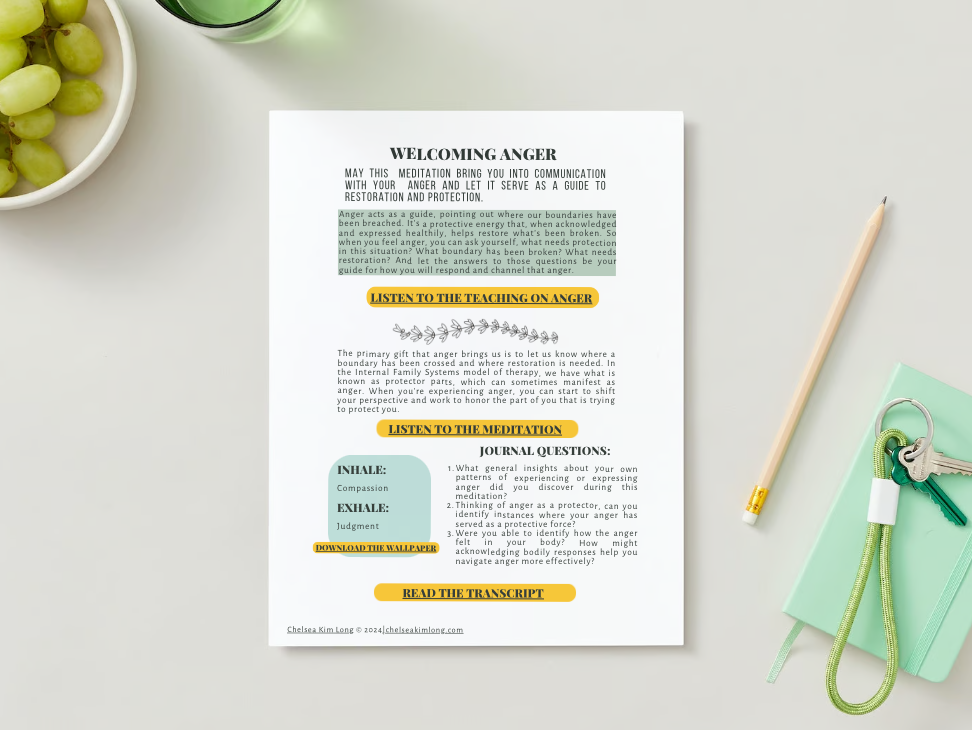Welcoming Anger Guided Meditation
May this meditation bring you into communication with your anger and let it serve as a guide to restoration and protection.


This is the first meditation in a series that focuses on what we might typically see as our “harder” or less acceptable emotions. Many of us have learned to push away these less desirable emotions based on a variety of reasons, perhaps religious, cultural, or social. Yet we know that it’s not healthy for us to repress emotions, and our meditation practice helps us create space for what is present within ourselves, even if it’s hard to face.
We want to learn to understand our emotions better, what they’re trying to tell us, and identify how they show up in our body, so that we can then work with our emotions and use the gifts they bring us instead of fighting against them. We'll explore how anger serves as both a protector and a catalyst for restoration. My teachings and the following meditations have been greatly informed by my study of Internal Family Systems Therapy or “parts work,” Somatic experiencing, and the book “The Language of Emotions” by Karla McLaren.
Paid subs can find a recording of this information below, and soon it will be up on Insight Timer for all, if you’d rather listen to me share this information.
Understanding Anger
When I use the word anger, it also encompasses stronger versions such as rage and fury. It’s important to note that anger is often felt by those who are doing work to heal from trauma, as a natural part of that process. The primary gift that anger brings us is to let us know where a boundary has been crossed and where restoration is needed. I often refer to the Internal Family Systems model of therapy. In IFS, we have what is known as protector parts, and these protector parts can sometimes manifest with anger. Notice that when you’re experiencing anger, it may be some part of you that is trying to protect you, and work to honor that.
How Anger Can Feel in Your Body
Let’s talk about somatics for a minute. Everyone experiences anger differently, and these body responses can be influenced by individual differences, cultural factors, and personal history. So as I talk through this, and then in the meditation when we work with our anger more directly, just be aware of what is happening and see if you can identify it. Anger can manifest as muscle tension, particularly in areas like the jaw, shoulders, neck, and back, or in your fists. This can lead to headaches. The body prepares for action, and this can result in a tightening of muscles.
Anger can feel like heat or flushing, an increased heart rate, agitation, shallow breathing, or an adrenaline surge, shaking, or upset stomach. These physical responses can happen as the body's way of dealing with excess energy that anger can bring.
What Needs Protection? What Needs Restoration?
Anger acts as a guide, pointing out where our boundaries have been breached. It's a protective energy that, when acknowledged and expressed healthily, helps restore what's been broken. So when you feel anger, you can ask yourself, what needs protection in this situation? What boundary has been broken? What needs restoration? And let the answers to those questions be your guide for how you will respond and channel that anger.
Repressive vs. Expressive Anger
I briefly want to mention two reactions that we often have to anger that can lead to negative consequences. The first is repressing, or pushing our anger down. Repressing anger can lead to enmeshment, self-abandonment, apathy, and depression. When you ignore your anger, you are neglecting the restoration of boundaries. On the opposite of that, we can also express our anger in harmful ways which can lead to harsh, isolating boundaries, hurting other people, or even hatred on an extreme end. A knee-jerk reaction can lead to violence. Neither of these options, repressing or expressing in harmful ways are helpful to us, so let’s look at how we can use our anger in healthy ways to move through the emotion and come out restored and protected.
The Power of Healthy Anger
Anger helps you create your boundary and has a sense of honor for yourself and for others. It stops you from violating other people. Anger can also protect other emotions, for example, sometimes if you’re afraid or feel vulnerable, your anger will come out to try and protect you. Healthy anger sets your boundary and helps you be awake to others boundaries and individuality - takes away power struggles, projections, or enmeshment. Remember, emotions are messengers, and anger's intensity highlights important, unhealed aspects within us.
Forgiveness and Healing
A quick note about forgiveness. Forgiveness can only follow when anger is used constructively to restore boundaries.
Conclusion
I hope you’ll join me in the meditation that follows as we get in touch with our anger to create space for its healthy expression in a safe space. As we journey together, remember that anger, when approached with respect and prayerfulness, is a guide, a warrior standing guard. Trust yourself, welcome your emotions, and allow anger to play its role in protection and restoration.